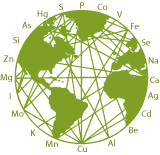Germanium and biological function
With the development of organic germanium and nanotechnology, germanium serves multiple biological functions, and its potential value in biochemistry and medicine has increasingly captured the attention of researchers. In recent years, germanium has gradually gained significance as a material in the field of biomedicine and shows promising application prospects. However, there has been a limited amount of research conducted on the biological effects and mechanisms of germanium, and a systematic evaluation is still lacking. Therefore, the aim of this review is to systematically examine the application of germanium in the field of biomedicine and contribute new insights for future research on the functions and mechanisms of germanium in disease treatment.
For more information https://pmc.ncbi.nlm.nih.gov/articles/PMC10634018/
Germanium toxicity
A Toxicological Evaluation of Germanium Sesquioxide (Organic Germanium)
Article Abstract
A battery of OECD- and GLP-compliant toxicological studies was performed to assess the safety of a highly purified germanium sesquioxide, an organic form of the naturally occurring, nonessential trace element germanium. Germanium dioxide and germanium lactate citrate (inorganic germaniums) have been shown to induce renal toxicity, whereas germanium sesquioxide (an organic germanium) has been shown to have a more favorable safety profile. However, past toxicity studies on germanium sesquioxide compounds have not clearly stated the purity of the tested compounds. In the studies reported herein, there was no evidence of mutagenicity in a bacterial reverse mutation test or an in vitro mammalian chromosomal aberration test. There was no genotoxic activity observed in an in vivo mammalian micronucleus test at concentrations up to the limit dose of 2000 mg/kg bw/day. In a 90-day repeated-dose oral toxicity study in Han:WIST rats conducted at doses of 0, 500, 1000, and 2000 mg/kg bw/day by gavage, there were no mortalities, treatment-related adverse effects, or target organs identified. The no-observed-adverse-effect-level (NOAEL) was determined to be 2000 mg/kg bw/day.
To read the full article: https://pmc.ncbi.nlm.nih.gov/articles/PMC7160733/
